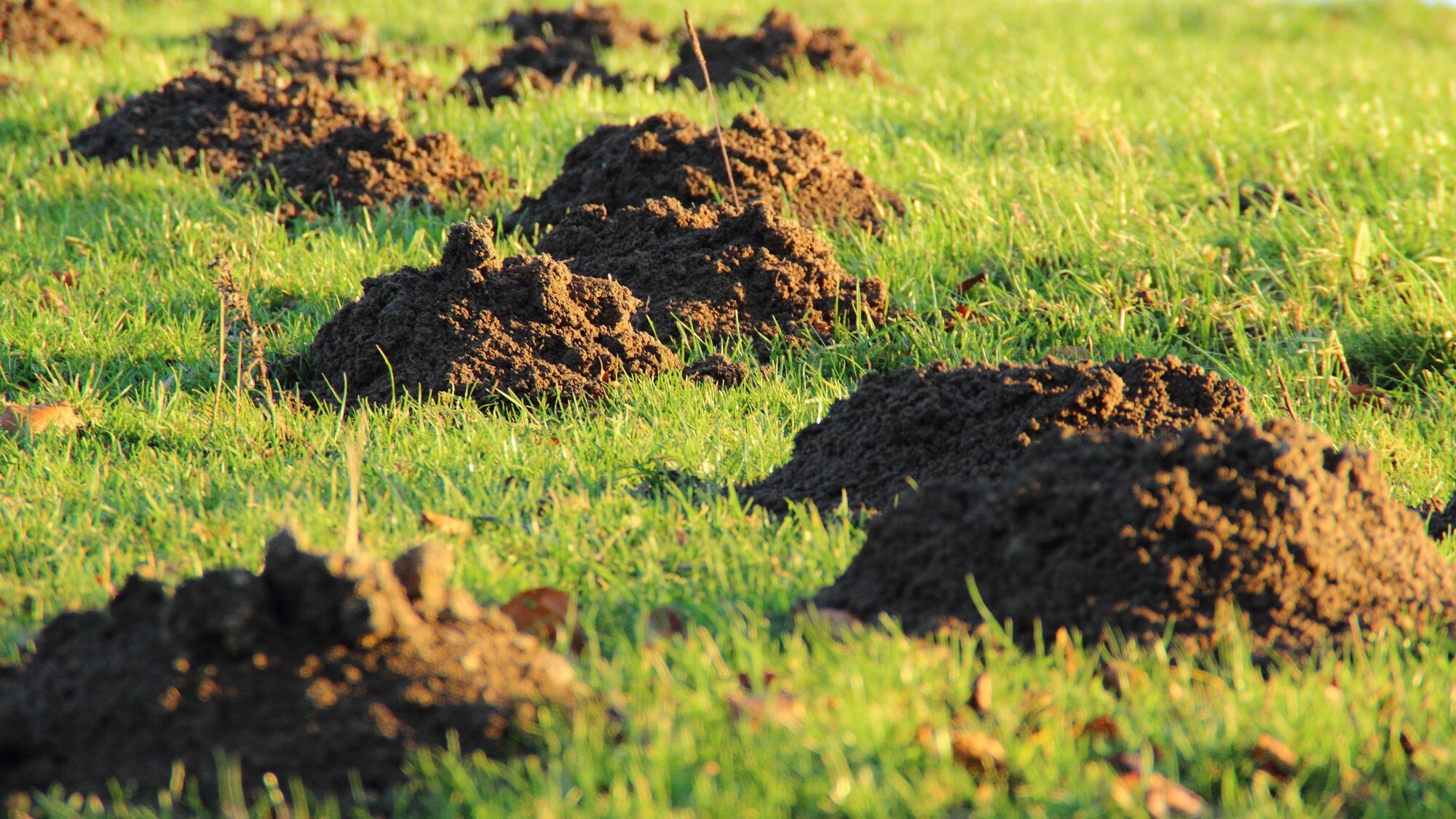
Did you know that the word “mole” comes from the term mold-warpe, which means “earth-thrower?” That’s such an apt name for these insectivores, seeing as they can dig tunnels at a rate and speed of 18 feet per hour. They have paws powerful enough to move and turn even the densest clay soils.
What’s more, the US is home to several of the 42 known species of ground moles. These include the Eastern mole, Townsend’s mole, and Broad-footed mole, to name a few. The Eastern mole is the most prevalent, though, as you can find them all the way from the Atlantic to Ohio to Florida.
As incredible as moles are, these garden pests can bring a host of problems if you allow them to let loose in your yard.
To that end, we created this guide discussing the most common ground mole problems. Read on to discover what they are and why you’d want these critters out of your property.
Potential Disease-Bringers
According to scientists, some species of moles are zoonotic hosts. They carry zoonotic pathogens that can result in zoonosis or zoonotic diseases. Zoonosis, in turn, is an infectious disease that jumps from a non-human animal to humans.
Rabies is a potential but rare zoonotic disease that moles may transmit to humans. Lyme disease and anaplasmosis are other health problems associated with moles. Moreover, some moles may be a host to a tick that carries Rocky Mountain Spotted Fever.
While it’s rare for moles to cause those diseases, they can nonetheless. That should be enough reason to invest in professional ground mole removal services. You don’t want to contract those illnesses, as some, such as untreated Lyme disease, can be deadly.
Unsightly Mole Mounds and Streaks
Some mole mounds are visible ground mole damages that look like tiny volcanoes on the soil. These raised, grassless soil patches usually connect to deep mole tunnels. These deep tunnels are long; a single eastern mole can create a 160-foot tunnel within just one night.
Moles also create runways, which appear as raised, grassless streaks on soil surfaces. These ugly marks result from moles throwing all that earth around as they explore or search for food.
Water Accumulation in the Yard
The tunneling activity of moles not only creates actual tunnels; it also aerates the soil. Both effects then make it easier for water to penetrate and seep through the soil. The water can remain within the hollow tunnels, giving rise to water pooling and building up.
If there’s always water pooling up in your yard, it can attract other pests, such as mosquitoes. These insects are more than just pesky buggers; they can also cause diseases like dengue. What’s more, health experts say they can carry the West Nile Virus, too.
Plant Destruction
Speaking of water accumulation caused by moles, too much soil in the water can also drown plants. When your lawn is always wet, plant roots can rot, the leaves can turn yellow, and plants look wilted overall.
What’s more, the tunneling activity of moles can destroy plant roots. Again, that’s because these garden pests paw through the soil, displacing rooted plants.
You don’t want your garden plants to die, especially not if you rely on them for food.
So, as soon as you see withering plants without a clear cause, have your garden inspected for moles. The sooner an animal removal expert catches a mole, the fewer chances it has of reproducing. This then helps lower your odds of having to deal with a whole mole family.
Foundation and Slab Damage
The water that seeps through mole tunnels can make it all the way to your home’s foundation and slabs. From there, the water can pool up near foundations, freeze, and then thaw. Experts say these effects can make such structures more prone to cracks and damages.
Keep in mind that foundation damages can compromise your home’s structural integrity. For example, it can cause walls to bow, floors to become uneven, and surfaces to sink. So, the more severe the foundation damage, the more cracks that can develop on the walls, too.
In addition, foundation damage can make it difficult to close your doors and windows. This is a security risk you don’t want to take on, seeing as about 7 million property crimes occur in the US each year. As such, it’s best to hire ground mole trapping experts if you suspect moles to have invaded your property.
Damaged Plumbing Components
Mole burrowing and tunneling activities can result in garden sprinkler heads becoming uprooted. These can also cause warping damage on and displacement of underground water lines. All these, in turn, put your plumbing pipes at risk of leakage.
Keep in mind that the average US household has water leaks wasting up to 10,000 gallons annually. One in 10 homes even have leaks that waste 90 gallons a day.
So, if your water bills are going up without an obvious cause, you may have leaky underground water pipes. Some of those leaks may, in turn, be a result of mole activity.
If some areas of your lawn are always damp and you also see tunnels and streaks, you might have a ground mole problem. It’s best to call a ground mole removal specialist as soon as you notice these signs. It’s also a good idea to contact a local plumber if you do have damaged plumbing pipes.
Remove Those Ground Moles Invading Your Property Today
The fact that ground moles can destroy your garden is a good enough reason to remove them from your home. More than that, think about the diseases and property damage they can bring. That’s why the earlier you can get them out of your home, the better.
If you suspect moles are in your property, our Ohio and Kentucky licensed trappers can help. We provide not only mole but also other nuisance animal containment services. Get in touch with us now to learn more and to schedule your home for ground mole removal.







No comment yet, add your voice below!